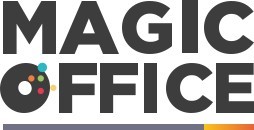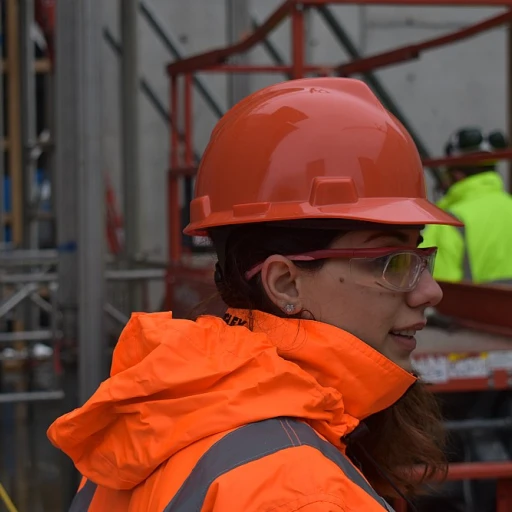
Understanding the Role of Change Management in E-Procurement
Introducing Change to E-Procurement
In the evolving landscape of e-procurement, change management has become an integral part of the procurement process. As UK companies embark on their digital transformation journeys, the transition to e-procurement systems often brings about significant changes in procurement processes. Recognizing the role of change management in this context is crucial for a successful procurement transformation. Understanding change management involves grasping how it facilitates the adoption of new procurement technologies and systems. The approach helps mitigate resistance change by managing stakeholders' expectations and addressing concerns related to new procurement processes.Email Best Practices in E-Procurement Transition
Effective change management is not just about making changes but also ensuring those changes are sustainable over time. This involves embedding best practices that support the new procurement technologies and ensure they are embraced by procurement professionals and teams. Furthermore, procurement change requires ongoing support and training to ensure that all stakeholders are aligned with the new processes. This includes effective communication strategies, designed to encourage collaboration between procurement teams and suppliers, thus facilitating smoother process transitions. Integrating e-procurement systems with existing supply chain processes is another key aspect where change management plays its role. It ensures that data and systems are seamlessly integrated, minimizing disruptions and enhancing cost savings. For more information on enhancing efficiency in procurement processes, you may refer to enhancing efficiency with inventory and condition forms.Key Challenges Faced by UK Companies
Challenges Encountered by Firms in E-Procurement Transformation
Change management plays a crucial role in the seamless implementation of e-procurement in the UK. As organisations navigate this digital transformation, several challenges often arise that necessitate strategic handling. Procurement teams often observe resistance to change among stakeholders. This reluctance can significantly hinder the adoption of new procurement systems and technologies, slowing down the transformation process and affecting potential cost savings. Establishing open lines of communication is essential to mitigate this form of resistance. Another challenge is integrating technology with existing systems. Procurement professionals may find it difficult to harmonize new processes with legacy systems. This can lead to inefficiencies unless addressed with robust change management strategies. Training is a pivotal aspect in overcoming these hurdles. Equipping teams with necessary skills and knowledge not only empowers them to utilize new procurement technology effectively but also fosters a culture more receptive to change. Additionally, ensuring that all data transforms correctly into the new systems is vital. Discrepancies in data can lead to inaccuracies and suboptimal decision-making throughout the procurement function. Supply chain complexities further complicate the process. Coordination with suppliers is necessary to smooth out any disruptions and uphold procurement processes efficiently during the transition. When it comes to public procurement, transparency and accountability pose unique challenges due to strict regulatory frameworks. Navigating these requirements requires meticulous planning and implementation. To overcome these challenges, consider adopting a well-structured filing system, which you can explore further here. This can help maximize the efficiency of communication and data management during the change management process. By focusing on these challenges and employing best practices, UK companies can transform their procurement processes and achieve enduring success in their digital transformation journey.Strategies for Effective Change Management
Strategies to Foster Change in E-Procurement
Effectively managing transformation in procurement requires a comprehensive approach that addresses the various aspects of the change process. Here’s how UK companies can navigate these changes efficiently:- Engagement and Communication with Stakeholders: Clear communication is pivotal. Involve all procurement teams and stakeholders early in the process to outline the benefits of the new systems and processes. Open dialogues can help reduce resistance to change, ensuring everyone understands the need for the procurement change.
- Comprehensive Training Programs: Providing adequate training for procurement professionals is essential for smooth adoption. Focus on familiarizing teams with new procurement technologies and digital transformation initiatives to reduce anxiety and increase proficiency.
- Utilizing Technology for Efficient Implementation: Leverage procurement technology to automate processes and enhance data accuracy. Investing in robust procurement systems can drive seamless integration, enabling a smoother transition to new practices.
- Support Systems and Continuous Feedback: Establish support frameworks to assist employees through the transition. Collect feedback regularly to pinpoint areas of concern and make necessary adjustments to processes and systems for better outcomes.
- Incremental Implementation Approach: Taking a phased approach in implementing procurement transformation can foster gradual change, allowing teams to acclimate over time and prevent overwhelming them with drastic shifts all at once.
Leveraging Technology for Seamless Integration
Utilizing Technological Advancements for Smooth Procurement Transitions
In the realm of procurement, technological advancement is key to facilitating effective change management. Leveraging technology enables UK companies to streamline their processes, enhance data accuracy, and foster better communication within procurement teams and with suppliers. When undertaking procurement transformation, the integration of procurement systems and technologies can mitigate challenges associated with change resistance. Here's how technology can support these transitions:- Automate and Simplify: Procurement technologies simplify cumbersome processes and reduce manual errors. Automation in e-procurement helps achieve cost savings and improves efficiency across procurement functions. It also minimizes time lags in procurement processes, enabling quicker decision-making.
- Data-Driven Decisions: Advanced procurement systems offer comprehensive data analytics tools. This empowers stakeholders to make informed decisions, adapting to changes in real-time and ensuring alignment with procurement strategies.
- Enhancing Communication: Seamless integration of communication tools within procurement systems enhances collaboration among teams, suppliers, and other stakeholders. Effective communication minimizes resistance change and fosters a shared vision of the procurement change journey.
- Training and Support Systems: Ensuring employees are well-versed with new technologies is crucial. Embedding robust training programs facilitates smoother adoption of new systems and mitigates reluctance. Ongoing support can reinforce learning and encourage engagement with procurement professionals.
Case Studies: Success Stories from UK Companies
Transformational Change: Real-World Applications in UK E-Procurement
Implementing effective change management strategies in e-procurement isn't merely an academic exercise—it’s a real-world challenge that many UK companies have successfully navigated. Here, we explore some remarkable case studies illustrating successful e-procurement transformations, shedding light on the pivotal factors leading to success.
Some businesses have demonstrated a commitment to digital transformation by pioneering e-procurement systems that seamlessly integrate with their existing processes. These companies prioritized training and communication to overcome change resistance, ensuring that all stakeholders—from procurement teams to procurement professionals—understood the benefits of the new procurement processes and systems.
The significance of a well-supported transition cannot be overstated. One notable example saw a company investing time and resources into robust change management frameworks, which helped mitigate resistance change among their teams. This, coupled with effective stakeholder involvement, not only facilitated a smooth procurement transformation but also drove significant cost savings and improvements in supplier management.
By leveraging innovative procurement technology, such companies have managed to streamline their supply chains, optimizing procurement processes and achieving measurable improvements in efficiency. Implementing automated systems and fostering open lines of communication between procurement professionals and technology teams were vital steps toward minimizing disruption and ensuring successful technology adoption.
Ultimately, these case studies exemplify the benefits of a holistic and strategic approach to e-procurement change management, demonstrating that with the right strategies in place, companies can achieve their desired transformation and enhance their e-procurement functions for long-term success.
Best Practices for Sustaining Change
Ensuring Lasting Success in Procurement Transformation
Implementing effective change management strategies is crucial in maintaining the positive outcomes of procurement transformations for UK companies. Procurement teams must focus on several best practices to make sure changes are sustained over the long term.- Continuous Stakeholder Engagement
- Ongoing communication with all stakeholders, including procurement professionals and suppliers, is essential. Keeping them informed and involved ensures buy-in and reduces resistance to change.
- For public procurement settings, maintaining transparency with stakeholders helps in building trust and fostering collaboration.
- Regular Training and Skill Development
- Continuous training programs for employees should be a priority. This keeps teams up-to-date with new procurement processes and technologies, aiding in the smooth adoption of innovations.
- Supporting employees through training not only helps in reducing change resistance but also empowers them to handle future procurement transformations efficiently.
- Monitoring and Evaluation
- Regularly assessing the procurement systems and processes is necessary to identify areas for improvement.
- Data-driven decision-making should be promoted to optimize procurement functions and achieve cost savings.
- Embracing Technology
- Leveraging technology enables seamless integration of new procurement systems. Automation can streamline procurement processes, reduce manual errors, and enhance supply chain efficiencies.
- By focusing on digital transformation, teams can better manage the dynamic procurement landscape and sustain change.
- Developing a Supportive Culture
- Encouraging a culture that is adaptable to change is critical. Management should support an environment where teams feel safe to experiment and adopt new approaches.
- Success stories from within UK companies highlight the importance of a solid change management framework in driving procurement success.













